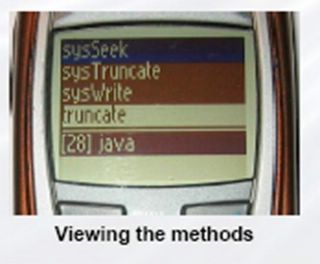Developers are used to the highly programmable and open environment of the Internet. Understandably, they get frustrated about the relatively restricted possibilities for making things happen in the mobile ecosystem.
This has led some energetic attempts to provoke debate about the problem. One notable effort is
Open Gardens, a book by Ajit Jaoker and Tony Fish, positioning themselves as change agents in the milieu. Ajit has gone on to produce his own publishing company to promote the writings and ideas of industry visionaries, like Tomi Ahonen.
Essentially, there is a tension between operators and external entrepreneurs and developers who see that their mobile product and service ideas are thwarted by onerous attributes of the mobile ecosystem.
The product idea I shall introduce here is potentially useful in its own right for all mobile users. However, it has an added benefit of allowing a more open arrangement with the operators, at least at the individual level so that a particular user could play with mobile ideas more easily than at present. This might at least allow the floodgates of creativity to open a little and nudge the industry in the right direction.
Every user should be provided with a web account that enables access to their mobile services online, such as:
1. Voice mail
2. Call handling (i.e. forwarding, diverts etc.)
3. SMS
4. MMS
5. Location services
6. Billing (inc. top-ups)
7. Address book with synchronisation features
8. Ring-back tone manager
9. Other stuff (more on this later)
Let's call this portal "MyMobile", for want of a better name.
The features above are all accessible via an authenticated web portal and only work for the mobile associated with the particular MyMobile account.
The services would be useful in their own right. For example, I could send SMS from my account to any of my contacts and this would be billed to my mobile. An MMS composer would also be included and allow me to easily send pics from my account. Again, billing is to my mobile.
Location services would allow me to make location pings of my mobile. Now, that might seem like a stupid idea. I know what you're thinking. Why do I want to ping my mobile's whereabouts from a web page?
Well - don't forget that I could also access this portal from my device's browser. So, now that you can see that all the above services are accessible via my device, perhaps this might set some creative sparks flying. But that's not all...
The really interesting feature of MyMobile is that all of the above features are also accessible via web services, which is why I headlined the idea as an "open personal mobile gateway". Are you beginning to get the drift now?
Yes?
I can programmatically gain access to any of the functions, which means I can start to do creative things with my mobile services without worrying about operator permissions, billing arrangements and authentication issues etc. I can play in the sand pit, or should I say sand box.
OK, you want some examples of what I could do.
No problem.
Imagine I write a MIDlet for my phone that manages my meetings. It might allow me to take minutes of meetings (see
idea #6). Additionally, let's say it keeps a record of all my meetings times, either directly or via the phone's calendar. Using the MyMobile interface, the MIDlet could divert my calls to voicemail automatically during meetings. Well, perhaps that' s possible on some phones anyway (e.g. Symbian). However, with MyMobile I could implement this feature from anywhere. I could get Exchange or Notes to do the same.
Now, let's say that the voicemail allows us to upload sound files (which is an idea all by itself) for our greeting messages and that it allows per-number customised greetings. In other words, if Bill calls me, then I can play the sound file for Bill. With MyMobile, I could dynamically upload sound files as often as I liked.
Let's follow that thread for a moment. A common "should-do" task for consciencious professionals is to update their voicemail message everyday: "Hi, today is Tuesday the 12th of May and I am out all day - please leave a message".
Now, that might be a bit too much for many of us to bother with, or remember to do. How many times have you called someone who is "Out today on the 18th of June" and it's the 23rd of July?
With MyMobile, an enthusiastic developer could program this in a day. In other words, with MyMobile and some programming, we've extended our voicemail functionality to something a bit more interesting and useful.
My application examples might not get your juices flowing, but that's not really the point. Whatever takes your fancy, that's what you go program. Imagine being able to play around all day with easy-peasy programming, dancing in the sand box and making cool things happen with your mobile. Combined with the power of MIDlets (if needed), all kinds of possibilities emerge - and that's the point! Any code hack could build a mobile app based on this approach.
We could well imagine that an open source movement emerges around the idea of creating customised MyMobile apps. Want to have your own daily-update voicemail. No problem, download the code and load it on your server. Want to have a shared address book among a group of friends or associates. No problem. Download, plug and play!
Power to the user!
[I'll add more to the idea in some later posts, including some thoughts on the implementation of MyMobile.]
Join my email listSubscribe to my "100 Mobile Product Ideas" free e-book




